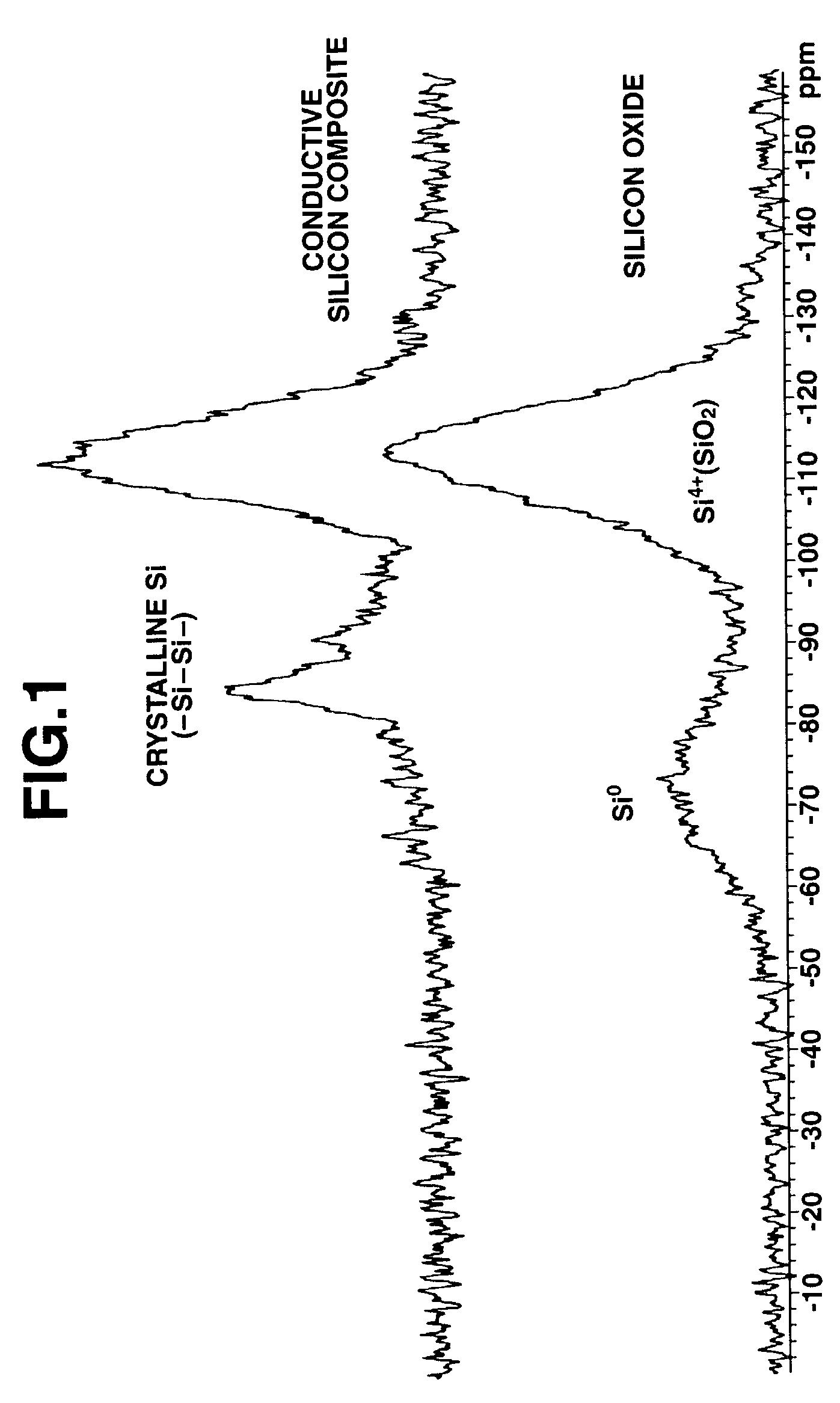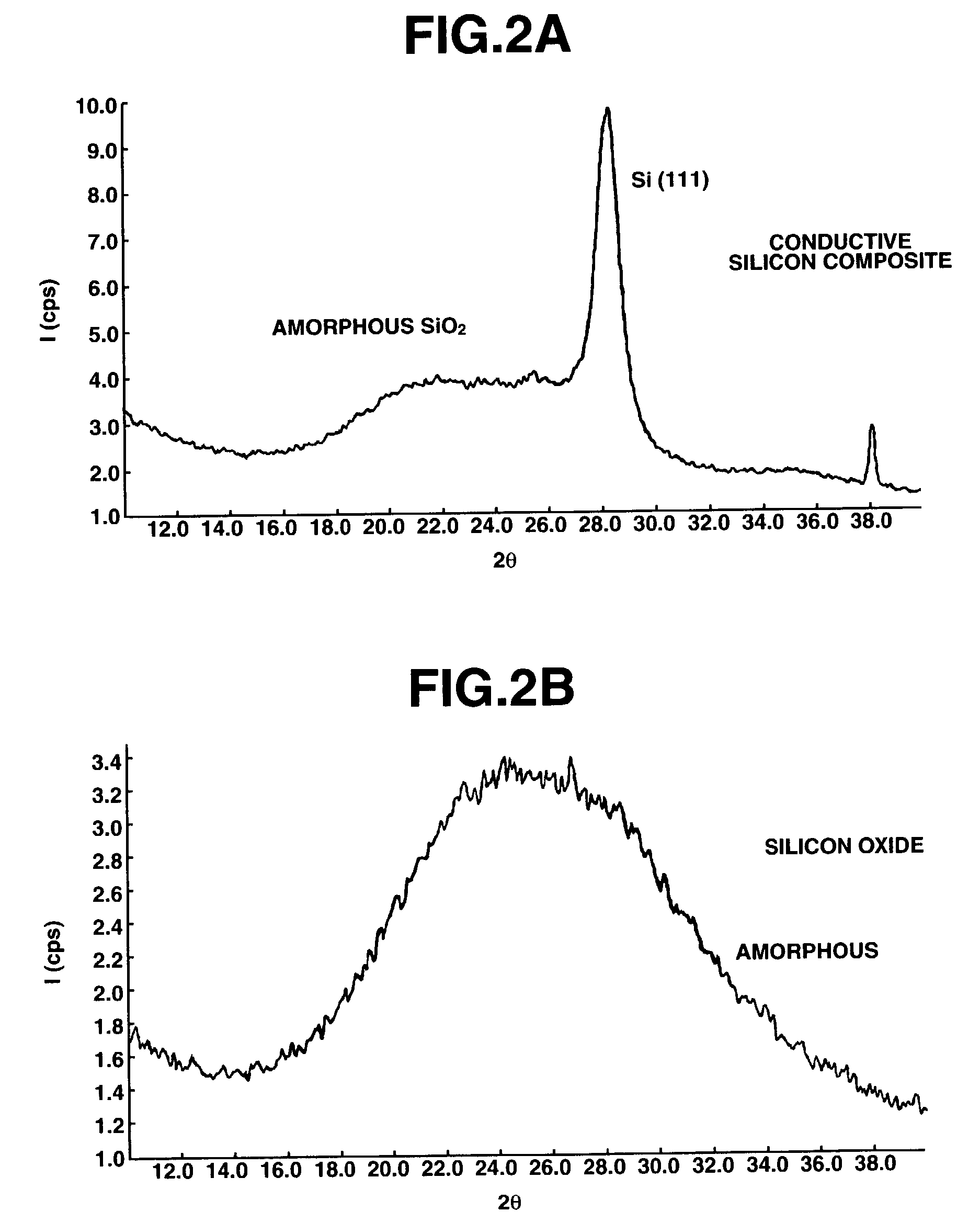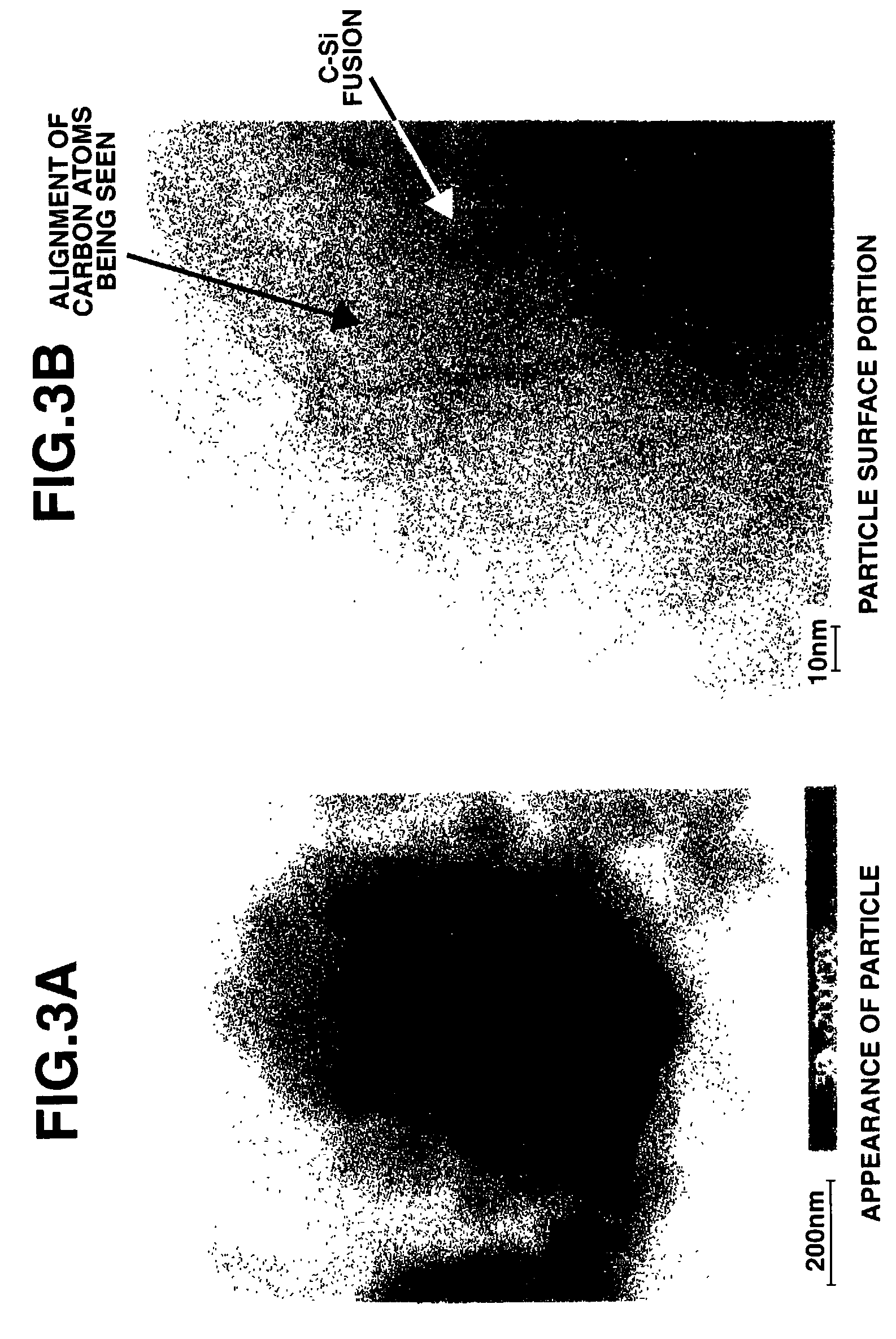Conductive silicon composite, preparation thereof, and negative electrode material for non-aqueous electrolyte secondary cell
a secondary cell and negative electrode technology, applied in the direction of cell components, conductors, cellulosic plastic layered products, etc., can solve the problems of poor cycle performance, low initial efficiency, and most of them have not reached the practical level, so as to improve cycle performance
- Summary
- Abstract
- Description
- Claims
- Application Information
AI Technical Summary
Benefits of technology
Problems solved by technology
Method used
Image
Examples
example 1
[0058]To demonstrate the structure of a conductive silicon composite according to the invention, reference is made to one exemplary conductive silicon composite derived from silicon oxide (SiOx) as a starting material.
[0059]Silicon oxide (SiOx, x=1.02) was milled in a ball mill using hexane as a dispersing medium. The silicon oxide powder thus obtained was placed in a rotary kiln type reactor where disproportionation of silicon oxide and thermal CVD were simultaneously carried out in a stream of methane-argon gas mixture at 1,150° C. and for an average residence time of about 2 hours. The powder thus obtained was analyzed by solid-state NMR, x-ray diffractometry, TEM photomicroscopy and Raman spectroscopy (excitation light 532 nm), with the results shown in FIGS. 1 to 4, respectively. As seen from the results of solid-state 29Si-NMR analysis on silicon oxide as the starting material and conductive silicon composite as the final product, in the curve of the conductive silicon composi...
example 2
[0064]Silicon oxide (SiOx, x=1.02) was milled in a ball mill using hexane as a dispersing medium. By filtering the suspension thus obtained and removing the solvent in a nitrogen atmosphere, a powder having an average particle size of about 0.8 μm was obtained. The silicon oxide powder was placed in a rotary kiln type reactor where disproportionation of silicon oxide and thermal CVD were simultaneously carried out in a stream of methane-argon gas mixture at 1,150° C. and for an average residence time of about 2 hours. The product thus obtained had a carbon content of 16.5% and the amount of active silicon or zero-valent silicon was 26.7% as determined from a quantity of hydrogen generated upon reaction with an aqueous potassium hydroxide solution. On analysis by X-ray diffractometry (Cu—Kα), the silicon crystals dispersed in silicon dioxide had a size of about 11 nm as determined by Scherrer method from the half width of the diffraction line at 2θ=28.4° attributable to Si(111). At t...
example 3
[0069]Silicon oxide in block or flake form was heated in an inert gas (argon) atmosphere at 1,300° C. for one hour to effect disproportionation into silicon and silicon dioxide. On analysis by X-ray diffractometry (Cu—Kα), the silicon crystals in the product had a size of about 55 nm as determined by Scherrer method from the half width of the diffraction line at 2θ=28.4° attributable to Si(111). The silicon-silicon dioxide composite as heat treated was then milled in a ball mill using hexane as a dispersing medium. By filtering the suspension thus obtained and removing the solvent in a nitrogen atmosphere, a powder having an average particle size of about 0.8 μm was obtained. The silicon composite powder was placed in a vertical tubular furnace (inner diameter ˜50 mm) where thermal CVD was carried out in a stream of methane-argon gas mixture at 1,100° C. and for 3 hours. The conductive silicon composite powder thus obtained was disintegrated in an automated mortar. The conductive si...
PUM
| Property | Measurement | Unit |
|---|---|---|
| Temperature | aaaaa | aaaaa |
| Temperature | aaaaa | aaaaa |
| Temperature | aaaaa | aaaaa |
Abstract
Description
Claims
Application Information
 Login to View More
Login to View More - R&D
- Intellectual Property
- Life Sciences
- Materials
- Tech Scout
- Unparalleled Data Quality
- Higher Quality Content
- 60% Fewer Hallucinations
Browse by: Latest US Patents, China's latest patents, Technical Efficacy Thesaurus, Application Domain, Technology Topic, Popular Technical Reports.
© 2025 PatSnap. All rights reserved.Legal|Privacy policy|Modern Slavery Act Transparency Statement|Sitemap|About US| Contact US: help@patsnap.com



